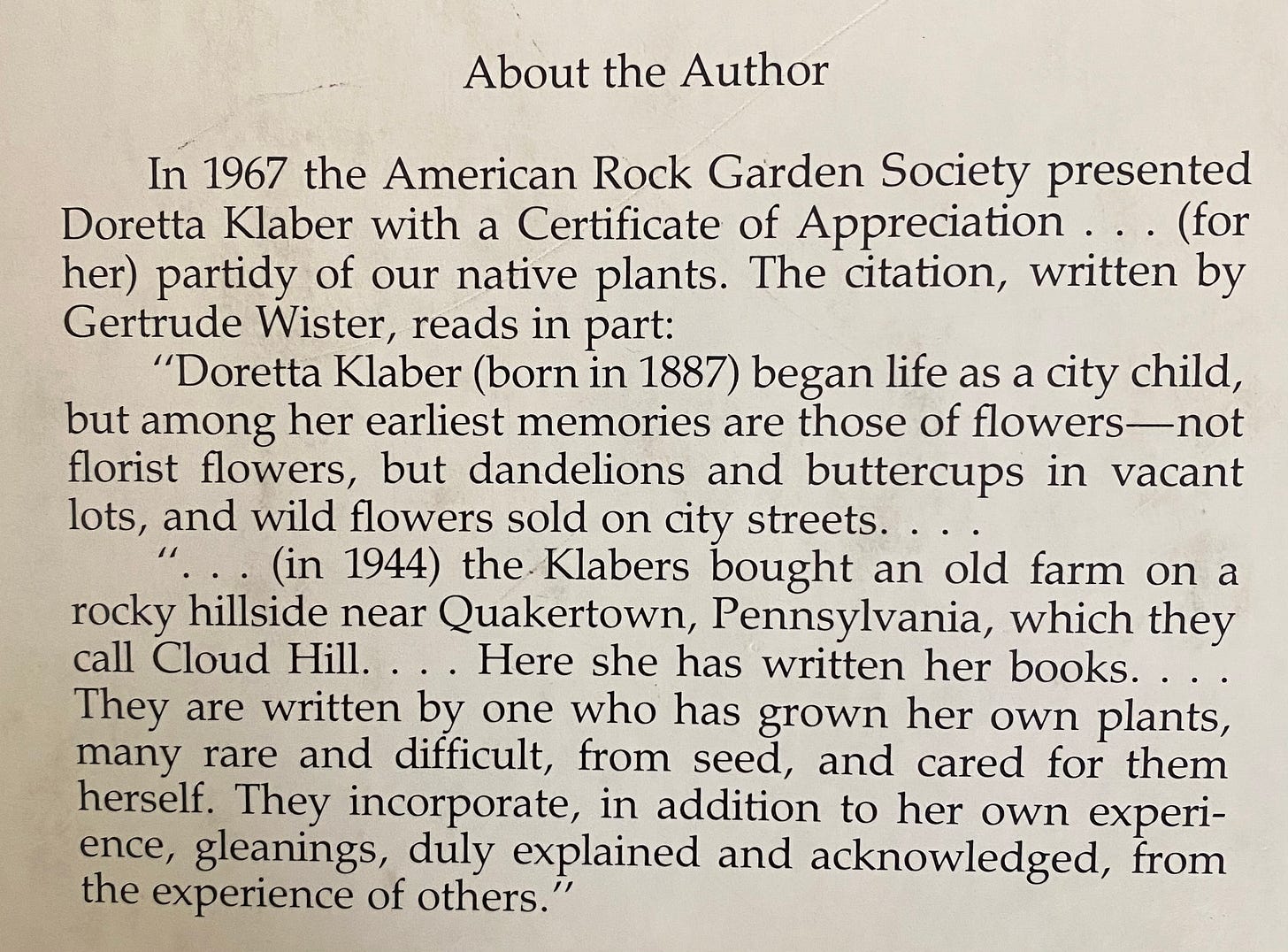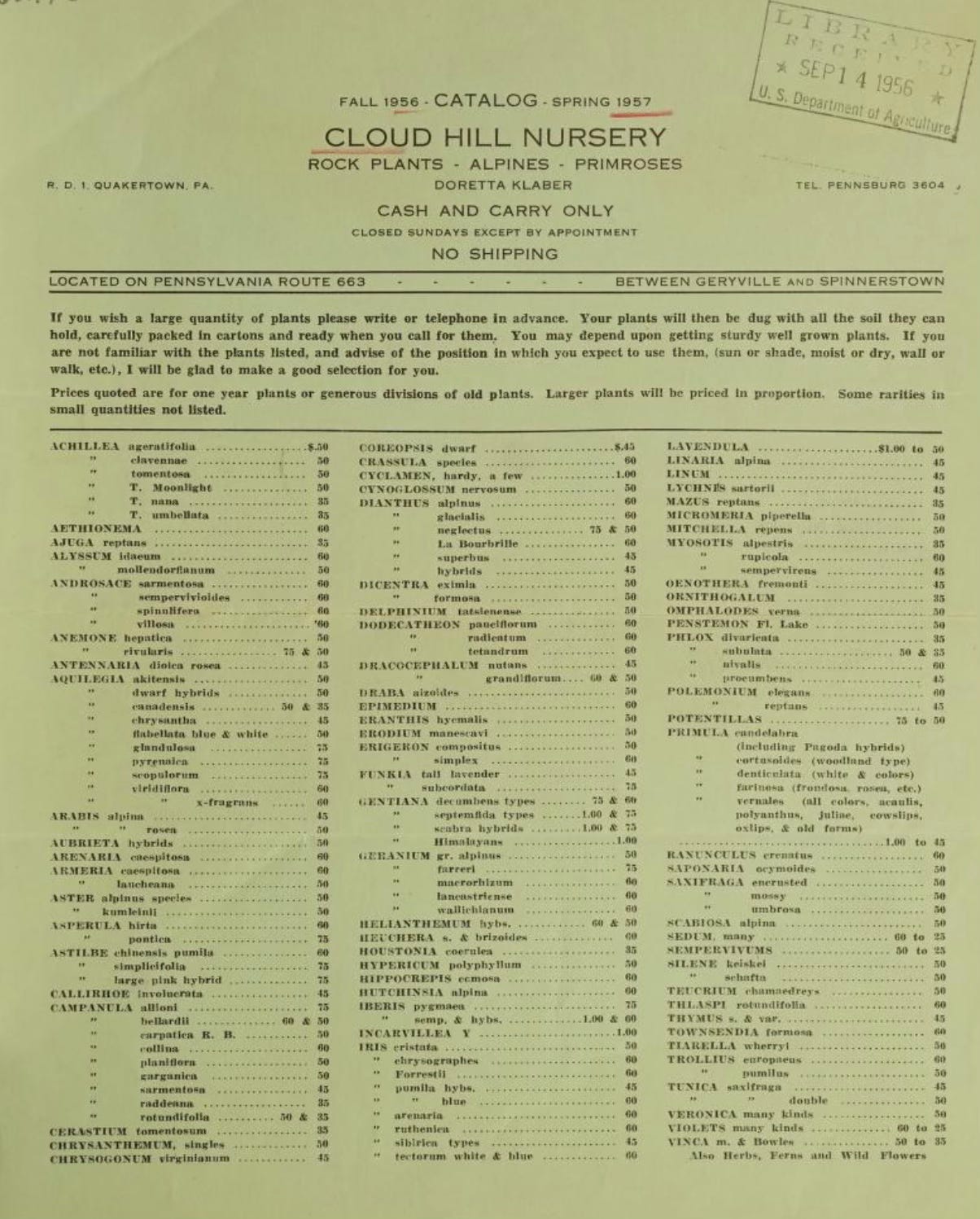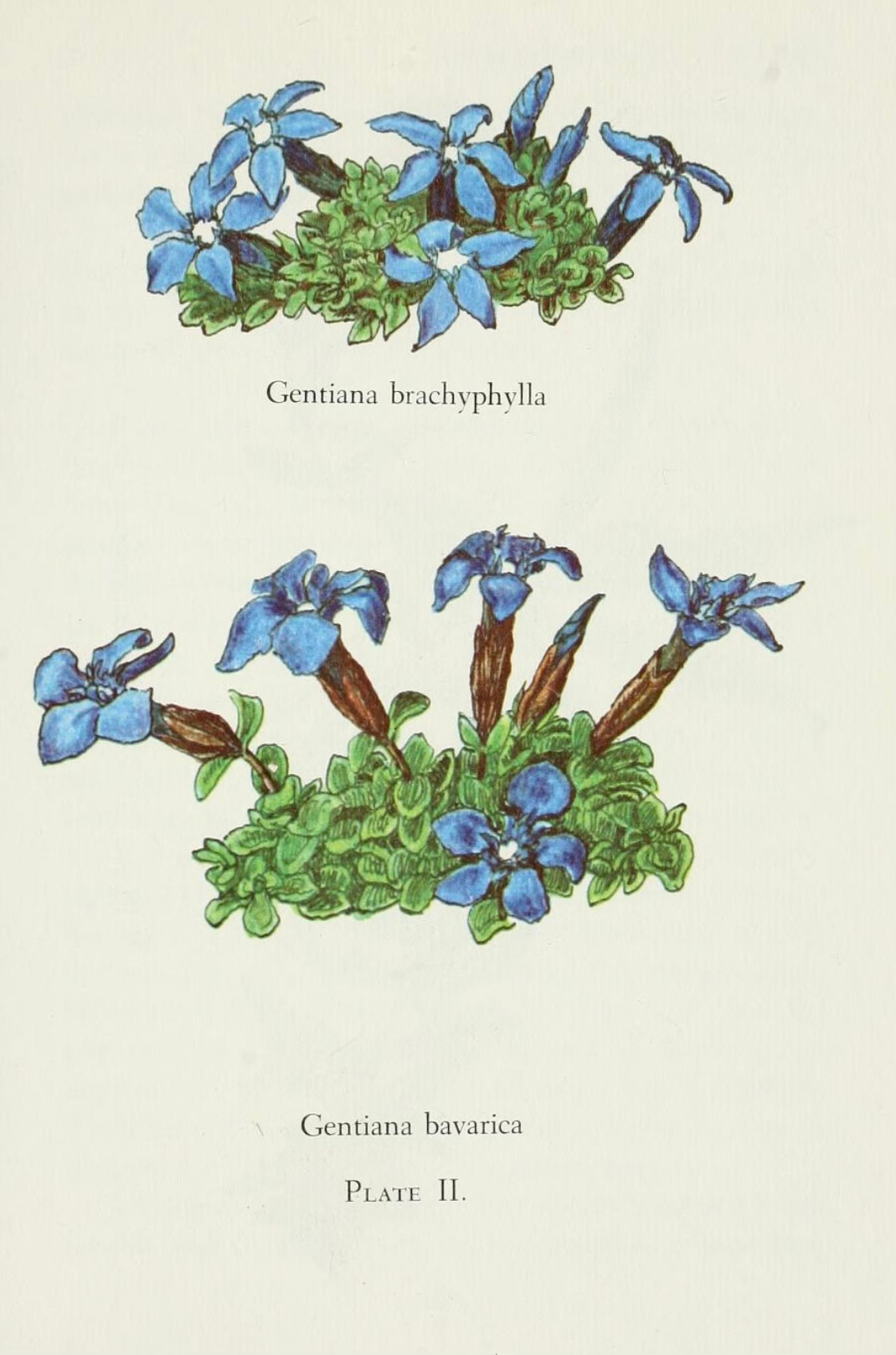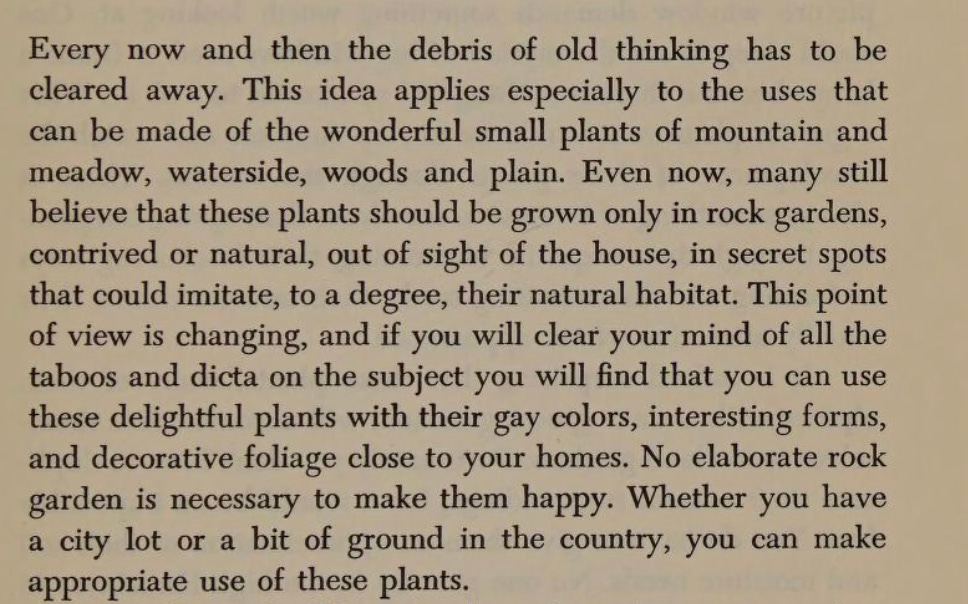Last week, I added an index to this Substack to make it easier to find the Lost Ladies of Garden Writing that I’ve written about, as well as those on my list for possible future posts. In doing so, I discovered that though I had completed my research about Doretta Klaber, I never wrote about her.
I think, looking back at some of the newspaper clippings about her, I got distracted by Mrs. L. L. Huffmann, who had a garden column on the same page as an article about Doretta.
Sorry, Doretta!
Let’s make it up to her and choose her as this week’s Lost Lady of Garden Writing. After all, my research suggests she might be quite miffed if I didn’t!
Her Biography
Doretta was born November 5, 1887 to Joseph and Matilda Oppenheim in New York City. She married her husband, Eugene Henry Klaber in 1913, and they had a son (1916) and a daughter (1920).
There is more biographical information in A History of the American Rock Garden Society, 1934 - 1995 by Marnie Flock. I can only see a bit of it online, but from that I’ve learned that,
“Doretta attended art school and later studied Landscape Architecture at Cornell. She designed and built rock gardens for several years. In 1944 she and her husband moved to an old farmhouse near Quakertown, which they called Cloud Hill. She ran a rock garden nursery for many years... Doretta wrote with enthusiasm and feeling about her garden and its plants.” (History of the American Rock Garden Society, 1934 - 1995 by Marnie Flock)
On the back cover of Doretta’s book, Violets, the “About the Author” gives a little more insight into her life.
“In 1967 the American Rock Garden Society presented Doretta Klaber with a Certificate of Appreciation… (for her) partidy1 of our native plants. The citation, written by Gertrude Wister, reads in part:
“Doretta Klaber (born in 1887) began life as a city child, but among her earliest memories are those of flowers—not florist flowers, but dandelions and buttercups in vacant lots, and wild flowers sold on city streets…
… (in 1944) the Klabers bought an old farm on a rocky hillside near Quakertown, Pennsylvania, which they call Cloud Hill… Here she has written her books… They are written by one who has grown her own plants, many rare and difficult, from seed, and cared for them herself. They incorporate, in addition to her own experiences, gleanings, duly explained and acknowledged, from the experience of others.”
Doretta died on May 23, 1974 in Quakertown, Pennsylvania. She was preceded in death by her husband, who passed away in 1971, and her son, who died in 1947.
Her Nursery
I’m not sure how long Doretta ran her nursery, but you can find copies of three of her one-page catalogs on the Biodiversity Heritage Library site.
She did not ship and she only took cash. Most of the plants were less than a dollar, though there are few that were a dollar. Another catalog had a minimum purchase requirement of 50 cents. For comparison, $1 in 1956 would be almost $12 today.
Her Books
Finally we arrive at Doretta’s books, which make her a Lost Lady of Garden Writing and not just a lost grower of rock garden plants.
Her books, which she also illustrated, include:
Rock Garden Plants: New Ways to Use Them Around Your Home (1959, Henry Holt & Company)
Gentians for Your Garden (1964, M. Barrows & Company)
Primroses and Spring (1966, M. Barrows & Company)
Violets of the United States (1976, A. S. Barnes & Company)
Her book on violets was published two years after she died. Per a note from the publisher, she lived long enough to check the proofs.
At the beginning of her book on violets she wrote,
“One day I decided that I wanted to know our native violets so that I could call them by name and not just nod and smile as I went by. I soon discovered that the Violaceae are a complex family.”
She worked on that violet book for years, it seems. In the book, Two Gardeners: Katharine S White and Elizabeth Lawrence: a Friendship in Letters, there is a letter from Elizabeth to Katharine, written in 1969, in which she mentions Doretta’s book on violets:
“Did you know about Mrs. Klaber's violet book? She says it will have 108 sheets of color plates, 26 pen and ink drawings, and nine end pieces; and probably be from $25 to $50. Dr. Russell says it will be the definitive book on violets for the next fifty to a hundred years. - Elizabeth Lawrence to Katharine S White.”
(My copy of Doretta’s book on violets has the original cover, but I can’t find a price printed on it. I kept the receipt showing I paid $15 for it, plus shipping.)
Going back to the book on rock garden plants, for which I think she is most known, she wrote,
“Every now and then the debris of old thinking has to be cleared away. This idea applies especially to the uses that can be made of the wonderful small plants of mountain and meadow, waterside, woods and plain. Even now, many still believe that these plants should be grown only in rock gardens, contrived or natural, out of sight of the house, in secret spots that could imitate, to a degree, their natural habitat. This point of view is changing, and if you will clear your mind of all the taboos and dicta on the subject you will find that you can use these delightful plants with their gay colors, interesting forms, and decorative foliage close to your homes. No elaborate rock garden is necessary to make them happy. Whether you have a city lot or a bit of ground in the country, you can make appropriate use of these plants.”
She really wanted people to get over their misconceptions about rock garden plants being hard to grow!
As mentioned, I only have her book on violets, but if I found any of her other books out and about, I’d snatch them up.
Other Tidbits
I ran across many mentions of Doretta which provide a bit more insight into who she was as a landscape architect, horticulturist, author, and illustrator.
In Time and the Gardener: Writings on a Lifelong Passion by Elizabeth Sheldon (2004), Elizabeth mentions Doretta in a chapter on “the ill-tempered gardener.”
“Our own Doretta Klaber is to have been very, very good when she was good, but quite peremptory with those who would have taken up her time to no purpose.” - Elizabeth Sheldon.
Doretta also received an Award of Merit in 1967 from the North American Rock Garden Society. The July 1967 bulletin of the society has a nice article about Doretta, plus an article she wrote about summer in her Pennsylvania garden.
There is a thyme named for Doretta, Thymus serpyllum ‘Doretta Klaber.’ I think I need to grow it to remind me of this fascinating Lost Lady of Garden Writing.
Finally, one more quote from Doretta, in an article written in the Napa Valley Register in April 1959 by Martha Walker. Doretta is quoted as saying:
"No one goes up onto the Himalayas to manure the soil." - Doretta Klaber
I hope you’ve enjoyed meeting Doretta as much as I have.
Do you know of other women authors of gardening-related books that I should research as Lost Ladies of Garden Writing? Send them my way via a comment or email!
And if you find these articles interesting and think others will, too, please share them and subscribe.
I’ll return with the next Lost Lady of Garden Writing article in two weeks, on July 9. In the meantime, you can find me in several other places online: my website and blog, The Gardenangelists podcast, and my weekly newsletter, In the Garden With Carol.
I cannot find the word “partidy” in any of my dictionaries. Is it French?










P.S. I just read that Doretta's thyme is a ground-hugging, weed-choking, doesn't-much-like-watering thyme! Nice ground cover...or pool table cover plant, lol!
I'm on the hunt now for Doretta's thyme!💚